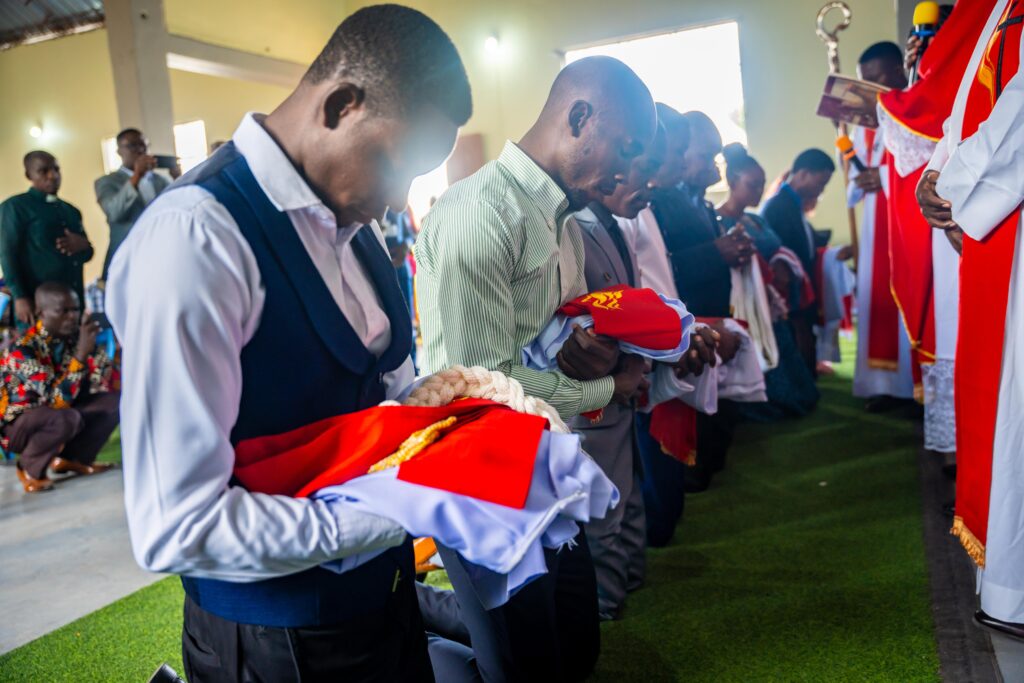
This is the second article in a three-part series on the “Quiet Revival.”
Data and stories from around the world reveal strong spiritual engagement among young people
In Part 1 of this series, “Glimpses of a quiet revival,” Rev. Gina Yeske shared her experience of visiting congregations over the summer and noticing more young people. This was exciting for me because I have been following research about this trend. While events like IGNITE, summer camps, and retreats can be catalysts of faith and leadership, faith formation happens year-round in the local church. I have been captivated by prominent studies, publications, and missional relationships that point to young people connecting back into faith communities. We can learn from stories, research, and global partnerships to continue reaching young people in this time when they need the hope we find in Jesus.
Signs of a Global Shift
While church leaders in America continue to adjust to consolidation realities, there are early indicators that something may be changing in how youth and young adults relate to faith communities worldwide. The emerging data doesn’t yet constitute full-scale revival, but it reveals patterns that challenge prevailing assumptions about generational spiritual disengagement.
In England and Wales, The Quiet Revival report documents church attendance rising 50% over six years, with monthly attendance among 18-24-year-olds increasing from 4% to 16%. Young men show particularly notable engagement, with attendance rates growing from 4% to 21%. These shifts represent measurable movement in contexts where decline seemed inevitable.
In the United States, signs of stabilization are emerging amid continued challenges. Barna’s 2025 State of the Church report found 66% of adults reporting personal commitment to Jesus that remains important—a 12-percentage-point increase since 2021. Research indicates Americans born in the 2000s are 46% Christian, matching those born in the 1990s and interrupting decades of generational decline. While challenges remain significant, these early indicators suggest the trajectory may be shifting.
Beyond Statistics: Openness and Engagement
The spiritual hunger evidenced in this data appears genuine and increasingly widespread. As The Quiet Revival report observes, “Both within and outside the Church, young adults are more spiritually engaged than any other living generation, with Bible reading and belief in God on the rise.”
This engagement creates practical opportunities: 31% of non-churchgoers say they would attend church if invited by a friend or family member, rising to 34% among 18-24-year-olds. Additionally, 18% express interest in learning more about the Bible. The revival has also found digital expression, with #ChurchTok videos accumulating over 50 million views in 2024, suggesting broad cultural curiosity about faith.
Tanzania: From Five Church Planters to a Movement
Some of the most dramatic examples of young adult spiritual engagement are emerging beyond the Western world. In Tanzania, the story of extraordinary multiplication began just over thirty years ago when Rev. Mutwale Ntambo and four other church planters crossed Lake Tanganyika from the Democratic Republic of Congo with little more than faith and determination.
Today, the United Methodist Church in Tanzania comprises over 100 churches serving tens of thousands through hospitals, schools, community development programs, and economic empowerment initiatives. What makes Tanzania’s story remarkable isn’t just the numerical growth—it’s the leadership profile. Young Tanzanian pastors and lay leaders are driving this expansion, often serving without guaranteed salaries—EPA&GNJ’s #forTanzania campaign is changing this reality—and motivated by passionate faith.

The Tanzania annual conference’s rapid expansion from its 1992 founding represents a significant growth story in the global church, demonstrating how young adults become catalysts for exponential church growth.
Korea: A Methodist Powerhouse
The Korean Methodist Church offers a compelling case study in how organized efforts to engage young adults can reshape entire church landscapes. With approximately 1.5 million members across 5,692 churches, Korean Methodism demonstrates remarkable commitment to young adult leadership in evangelism and church planting.
In 2002, the Korean Methodist Church launched the “3 Million Believers Evangelism Movement,” specifically designed to mobilize young adults in domestic mission and church planting efforts. This campaign became part of their broader initiative, “The Korean Methodist Church Giving Hope to the World,” which actively deploys young Korean leaders as missionaries and church planters globally.
South Korea is a leader in worldwide mission outreach, and the movement represents a systematic approach to engaging young adults not just as church members but as church multipliers. It demonstrates how intentional investment in young adult leadership can drive exponential growth and global mission impact.
Caution for Spiritual Searching
Along with increasing interest in religious engagement among young people, there has also been an increase in those drawn to religious and political movements that co-opt faith for authoritarian purposes – particularly among young men.
These ideologies understand that spiritual language—concepts like covenant, sacrifice, and righteous struggle—carries great motivational power. They offer counterfeit versions of what young men desperately need: a sense of mission, community, and purpose. The same spiritual hunger that might lead a young man to authentic faith community can just as easily be exploited by movements that baptize anger, nationalism, or exclusion rather than producing the humility, love, and reconciliation that mark genuine discipleship.
Hope: The Field Ripe for Harvest
Despite the challenges, global indicators suggest great opportunity for faith communities. The driving forces behind this spiritual awakening create space for authentic engagement:
Search for Belonging: The isolation and disconnection experienced during the pandemic revealed deep human needs for community, belonging, and spiritual grounding.
Economic and Social Uncertainty: As anxiety about individual and collective futures grow, faith communities offer hope in the presence of God and message of Jesus Christ
Search for Truth and Authenticity: In an era of fake news, avatars, and digital manipulation, young adults increasingly hunger for truth and authentic community that transcends virtual interactions.
Justice Integration: Research shows 69.2% of non-churchgoing Gen Z members seek communities providing opportunities to help others, wanting faith and social action together.
Remarkably, the data reveals not just increased spiritual interest but denominational movement within this shift. From the Quiet Revival in the UK to Tanzania’s exponential United Methodist growth to Korea’s young adult mobilization, the church is noticing an extraordinary opportunity. Across the globe, authentic faith communities that integrate worship, service, and genuine relationship-building are finding incredible receptiveness among young people. The spiritual hunger isn’t limited by geography, denomination, or culture.
In Part 3 of this series, we’ll explore practical steps congregations can take to recognize and participate in this movement God is stirring among young adults worldwide.
Additional Resources
- The Quiet Revival Report – Bible Society’s comprehensive research on church growth in England and Wales
- Barna’s 2025 State of the Church Report – Latest data on American religious trends
